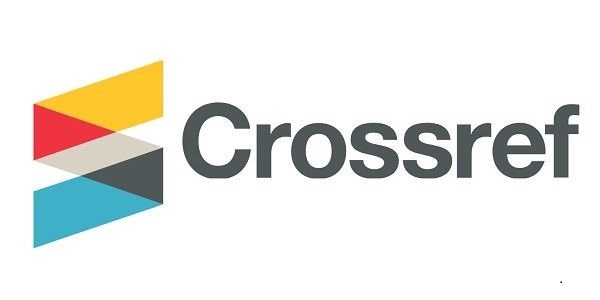The electronic structure, optical properties, and phonon transport of a VBi monolayer in the rock-salt phase using the first-principles method
DOI:
https://doi.org/10.56714/bjrs.49.2.16Keywords:
monolayer properties, VBi, half-metallicAbstract
The structural, electric, and optical characteristics of the rock salt (RS) VBi monolayer are studied, together with the phonon transport, using first-principles simulations based on density functional theory (DFT). In addition to its unique electronic properties, the (RS) VBi monolayer also displayed a broad absorption spectrum ranging from visible light to the ultraviolet region. Furthermore, its convergent phonon scattering rate was found to be reduced. These findings highlight the potential of further theoretical and experimental investigations into the electronic structure, optical characteristics of the VBi monolayer. The experimental outcomes have shown that the monolayer of (RS) VBi possesses the characteristic of being a half-metal. In the case of the spin-up configuration, the material exhibited metallic properties as the energy levels intersected the Fermi level. On the other hand, for the spin-down configuration, a gap in energy appeared on both sides of the Fermi level, resulting in the formation of a semiconductor. This is indicated by the presence of a gap between the conduction band and the valence band, with the total energy gap of the compound being determined by the combined magnitude of both gaps. The specific energy gap of the (RS) VBi monolayer was measured to be 0.55 eV, which is half the size of a typical metal's energy gap (0.3 eV). Moreover, the (RS) VBi monolayer exhibited a magnetic moment per unit cell equivalent to 2µB, demonstrating a strong polarization at the Fermi level due to its half-metal nature.
Downloads
References
R. A. de groot, F. M. Mueller, P. G. Van Engen and K. H. J. Buschow, phys. Rev. Lett 50(20),
(1983). Doi: https://doi.org/10.1103/PhysRevLett.50.2024
A. Rahman, M.U. Rehman, D. Zhang, M. Zhang, X. Wang, R. Dai, Z. Wang, X. Tao, L. Zhang, Z.
Zhang, Phys. Rev 550(50), 246 (2019).Doi: https://doi.org/10.1039/C9EE01722D
K. Elphick, W. Frost, M. Samiepour, T. Kubota, K. Takanashi, S. Hiroaki, S. Mitani, A. Hirohata,
Sci. Technol. Adv. Mater. 22(235), 1 (2021).Doi: https://doi.org/10.1002/est2.448
J.Han, R.Cheng, L.Liu, H.Ohno, Appl.Phys, . 44(635), 1 (2023). Doi:https://doi.org/10.1038/s41563-023-01492-6
J.M.K. Al-zyadi, H.I. Asker, K.L. Yao, Phys. E Low-Dimens. Syst. Nanostruct. 122(24), 19 (2020). Doi: https://doi.org/10.1016/j.elspec.2021.147060
R. Y. Umetsu, K. Kobayashi, R. Kainuma, Y. Yamaguchi and K. Ohoyama, A. Sakuma, K. Ishida, J.
Alloys Comp, 56(499),1 (2022).Doi: https://doi.org/10.1016/j.jallcom.2010.02.19
G.Y.Gao and K. L. Yao, J. Appl. Phys., 111, 113703 (2012). Doi: https://doi.org/10.1063/1.4724339
K.S. Novoselov, A.K. Geim, S. V Morozov, D.A. Jiang, Y. Zhang, S. V Dubonos, I.V Grigorieva,
and A.A. Firsov 360(33), 11 (2020).Doi: https://doi.org/10.1073/pnas.0502848102
G.E.Moore, IEEE Solid-State Circuits Society Newsletter 11 (3), 37 (2006). Doi:https://doi.org/10.1109/N-SSC.2006.4785861
W.K. Alaarage, A.H. Abo Nasria, and A.H.O. Alkhayatt, Compu. Theor. Chem. 1227, 114223 (2023).Doi: https://doi.org/10.1016/j.comptc.2023.114223
H.R. Jappor, J. Nanoelectron. Optoelectron. 12(8), 742 (2017).Doi:https://doi.org/10.1166/jno.2017.2088
X. Chen, R. Meng, J. Jiang, Q. Liang, Q. Yang, C. Tan, X. Sun, S. Zhang, T. Ren, Phys. Chem.
Chem. Phys. 18, 16302 (2016).Doi: https://doi.org/10.1039/C6CP02424F
H.R. Jappor, and A.S. Jaber, Sensor Letters 14, 989 (2016). Doi:https://doi.org/10.1166/sl.2016.3722
H.R. Jappor, and S.A.M. Khudair, Sensor Lett.15, 432 (2017).Doi:https://doi.org/10.1166/sl.2017.3819
J.M. Khalaf Al-zyadi, and A.A.-H. Nasser, Phys. Lett. A, 458, 128594 (2023).Doi:https://doi.org/10.1016/j.physleta.2022.128594
K.R. Paton, E. Varrla, C. Backes, R.J. Smith, U. Khan, A. O’Neill, C. Boland, M. Lotya, O.M.
Istrate, and P. King, Nat. Mater. 13, 624 (2014).Doi: https://doi.org/10.1038/nmat3944
G. E. Moore, Cramming more components onto integrated circuits, Electronics, 38, 8 (1965).
M.M. Waldrop, Nature. 12, 144 (2016). Doi: https://doi.org/10.1038/530144a
S.J. Clark, M.D. Segall, C.J. Pickard, P.J. Hasnip, M.I. Probert, K. Refson, and M.C. Payne, Cryst.
Mater. 55(15),11(20221).Doi:https://doi.org/10.1524/zkri.220.5.567.65075
J.P. Perdew, K. Burke, M. Ernzerhof, Phys. Rev. Lett. 456(12), 441 (1996). Doi:https://doi.org/10.1103/PhysRevLett.77.3865
T. A. Abdel, J. Supercond. Nov. Magn. 34, 1259 (2021). Doi:https://doi.org/10.1007/s1094802105843-9
M. Gajdoš, K. Hummer, G. Kresse, J. Furthmüller, F. Bechstedt, Phys. Rev. B 73, 045112 (2006). Doi:https://doi.org/10.1103/PhysRevB.73.045112
G.Y. Guo, K.C. Chu, D.S. Wang, C.G. Duan, Phys. Rev. B 444(144), 88 (2020). Doi:https://doi.org/10.1103/PhysRevB.69.205416
D.K. Sang, B. Wen, S. Gao, Y. Zeng, F. Meng, Z. Guo, and H. Zhang, Nanomaterials 999(12),
(2020).Doi:https://doi.org/10.3390/nano9081075

Downloads
Published
Issue
Section
License
Copyright (c) 2023 J. Basrah Res. (Sci.)

This work is licensed under a Creative Commons Attribution 4.0 International License.







